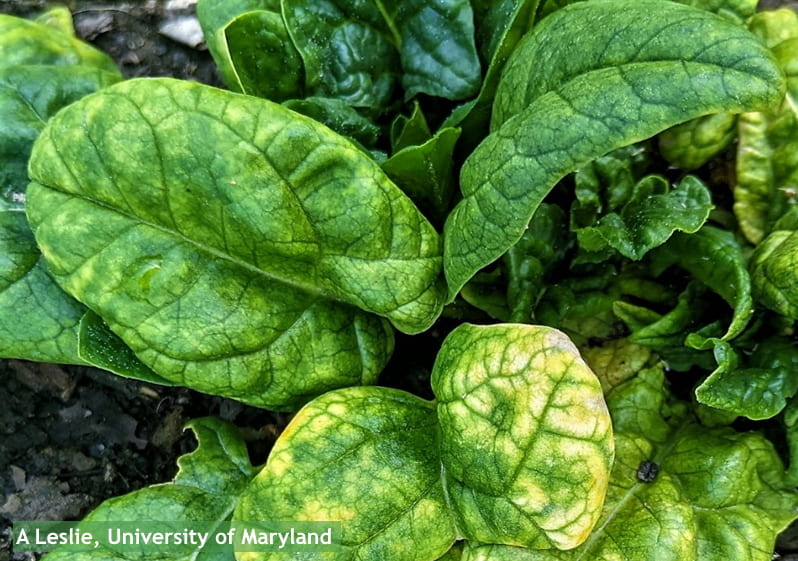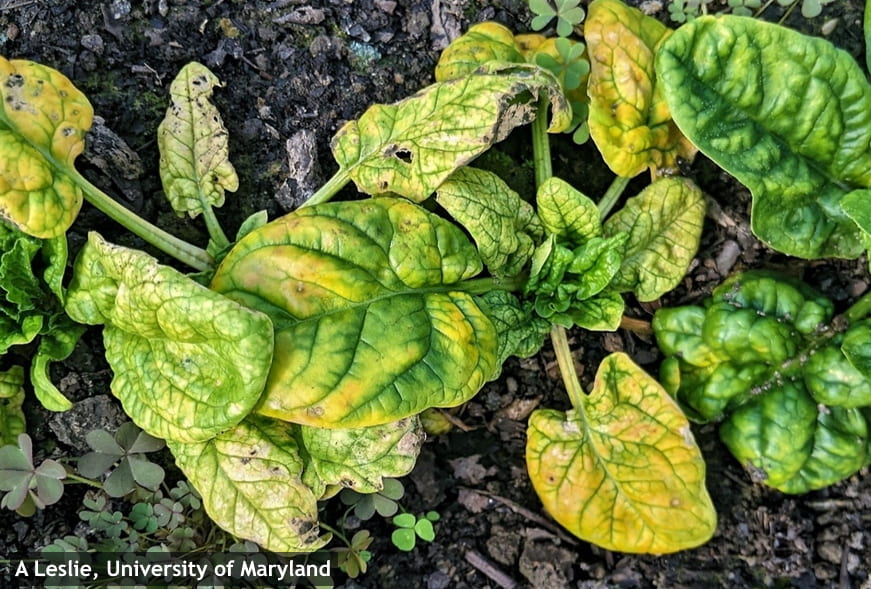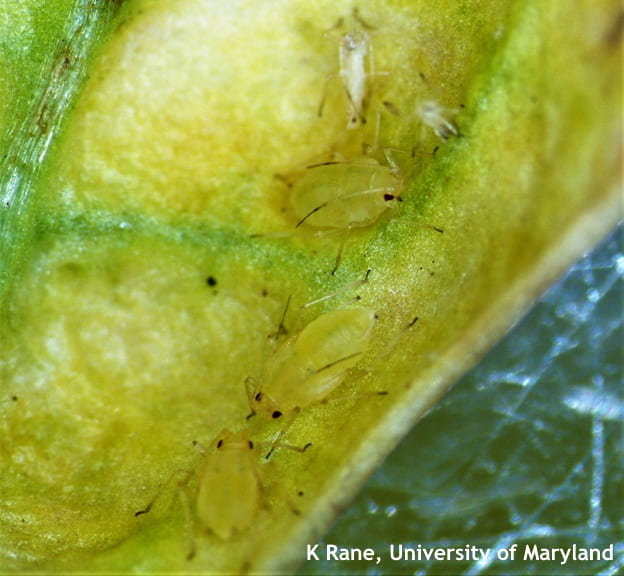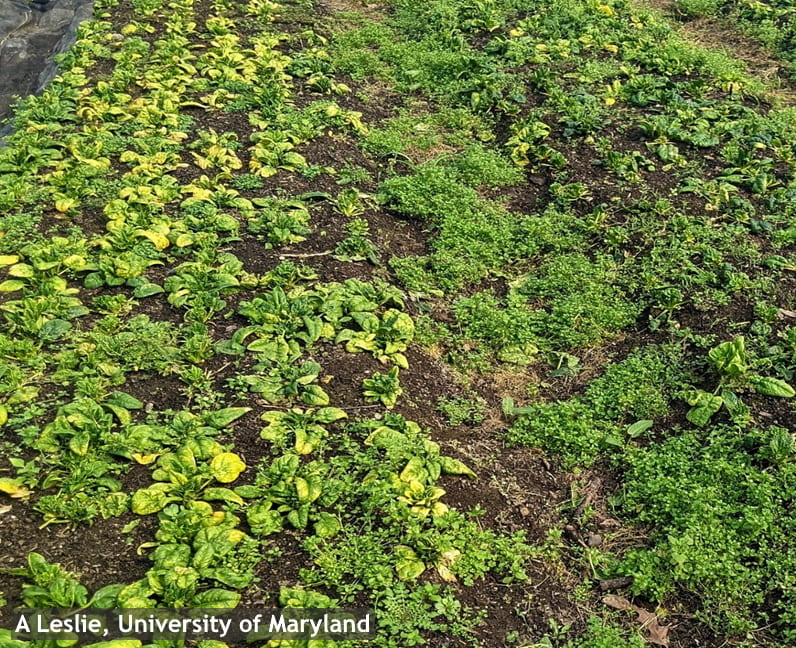Karen Rane, Plant Diagnostician, University of Maryland rane@umd.edu; Alan Leslie, UME Educator and Jerry Brust, IPM Vegetable Specialist, University of Maryland, jbrust@umd.edu
Winter crops of spinach, crucifers and other leafy produce have been growing nicely throughout most of this winter, but we came upon a high tunnel in which the spinach crop was not doing very well. We found that plants were infected with cucumber mosaic virus, CMV.
The first symptom of cucumber mosaic virus on spinach is a mild yellowing of younger leaves and a strapping or “puckered” appearance with margins of infected leaves rolling downwards (Fig. 1). As the disease progresses the foliage will show a yellow/ green mottle (Fig. 2) with stunted and severely damaged crown leaves, and even death of the growing point. The earlier a plant becomes infected with the virus the more severe the symptoms and damage will be.

Figure 1. Yellowing and puckering of spinach leaves infected with CMV

Figure 2. Older CMV infected spinach with a greater mottled appearance and puckering
Cucumber mosaic virus is only one of more than 10 virus diseases of spinach, but it is one of the most common and economically important viruses of this crop. The virus is vectored by 75 different aphid species in a nonpersistent manner (meaning that the aphid acquires the virus within a minute of feeding on an infected plant but does not remain infective for very long). The virus can also be spread by cucumber beetles and by cultivating and handling plants. CMV can overwinter in many weed species and can survive the winter in the roots of a weed and move to the aerial parts in the spring, where it can then be transmitted by aphids to other plants. Some of the more important weed hosts include: bur- and wild-cucumber, catnip, chickweeds, clovers, curly dock, dandelions, fleabane, flowering spurge, groundcherries, horsenettle, Jimsonweed, milkweed, pigweed, pokeweeds, nightshades and white cockle. These infected weeds often show no virus symptoms. Vegetable hosts include carrot, celery, cucurbits, legumes, lettuce, onion, pepper, spinach and tomato.
The worst case scenario would be to have heavy weed pressure within a high tunnel along with a high aphid population and this is what we found in the HT with CMV infected spinach – there was a high population of green peach aphid (Fig. 3) and a lots of weeds, including chickweed, in the beds (Fig. 4). Winter annual weeds like chickweed need to be eliminated from the HT before planting and its management maintained throughout production of the crop. Growers also need to scout for aphids and manage this pest early, so that populations do not build to high levels. Beauveria bassiana can give good control of aphids when their populations are low but does not work as well in managing high populations. There are several aphicides that can be used to control aphids on spinach that can be found in the 2022-2023 Mid-Atlantic Commercial Vegetable Production Recommendations guide, but growers need to be sure how their state defines using pesticides in a high tunnel before using them. There are several commercial spinach varieties that are resistant to CMV that should be considered for use in a high tunnel: Avon, Renegade, Winter Bloomsdale, Melody F1, Menorca, Butterflay, Virginia Savoy, Bloomsdale Savoy, Early Hybrid #7, Marabu RZ, Unipak 151.

Figure 3. Green peach aphids on spinach

Figure 4. High population of chickweed alongside CMV infected spinach crop
